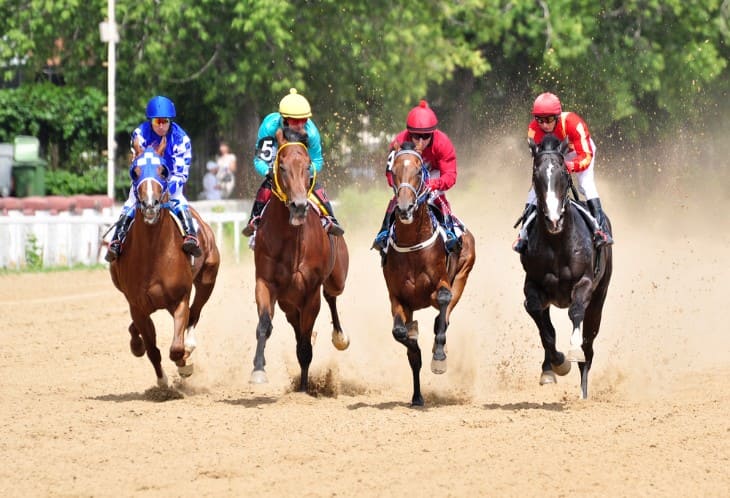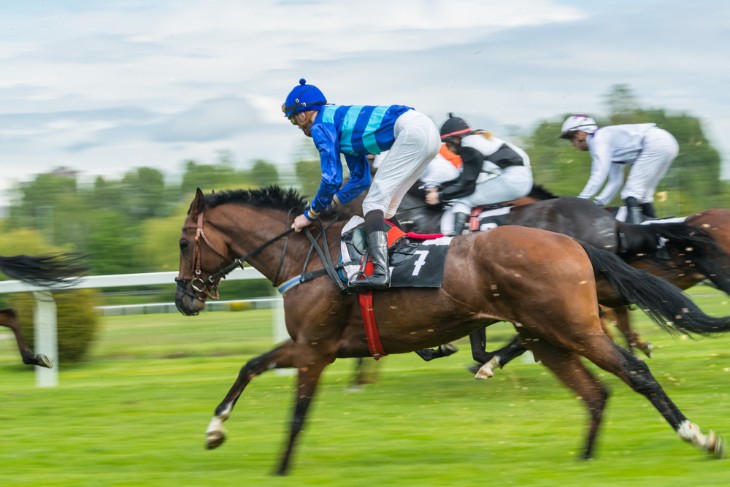- The Essence of Handicap in Amateur Riding
- Key Rules and Regulations in Amateur Riding
- Understanding Horse Selection for Amateurs
- Training Methods for Amateur Riders
- Impact of Track Conditions on Performance
- Role of Equipment in Amateur Horse Riding
- Nutrition and Fitness for Amateur Riders
- Psychological Aspects of Amateur Riding
- Strategies for Race Day Preparation
- Conclusion
The Essence of Handicap in Amateur Riding
Handicap systems in amateur horse riding are critical for ensuring fair competition among riders of varying skills and experience levels. Essentially, a handicap is a system used to level the playing field, where more skilled riders or better-performing horses are given disadvantages to balance their superiority over less experienced competitors. This approach is pivotal in amateur horse racing, where the spectrum of skills can be wide. The primary aim is to give every participant a reasonable chance of winning, fostering a more competitive and engaging environment.
The implementation of handicaps varies. In some instances, it involves assigning additional weight to the more skilled riders or faster horses. This method, known as weight-for-age, is common in many amateur races. The underlying principle is that a heavier load will slightly reduce the speed of a faster horse, giving others a better chance to compete. The intricacies of these systems are often governed by local racing authorities, and understanding them is crucial for any amateur rider looking to participate in competitive events.
Amateur horse racing has a rich and varied history, tracing back centuries. It began as a pastime for the aristocracy, where the thrill of the race was more valued than monetary gain. Over time, it evolved, becoming more accessible to people from different walks of life. This transition played a significant role in shaping the modern landscape of amateur horse racing.
Key historical milestones include:
- The Establishment of Racing Clubs: In the 18th and 19th centuries, numerous racing clubs were formed across Britain, laying the foundation for organized amateur horse racing.
- The Role of the Industrial Revolution: The industrial era brought about significant changes in transportation and communication, allowing for wider participation and a larger audience for horse racing.
- Development of Handicap Systems: To encourage fair competition, early forms of handicaps were introduced, evolving over time into the sophisticated systems used today.
Understanding this history is not just about appreciating the sport's evolution; it offers insights into the cultural and social dynamics that have shaped amateur horse racing into what it is now. It also provides context for the rules, traditions, and practices prevalent in today's amateur racing scene.
Key Rules and Regulations in Amateur Riding
In the realm of Amateur Riders’ Handicap, understanding and adhering to the key rules and regulations is essential. These guidelines are not only designed to ensure fair competition but also to uphold the safety and welfare of both the horses and riders. Each racing jurisdiction may have its own set of rules, but there are common principles that are universally recognized. These include regulations on age and experience of the riders, the types of equipment allowed, and the conditions under which horses can compete.
Moreover, amateur races often have specific rules regarding the handicap system. These rules determine how weights are assigned to horses based on their past performances and other factors. Understanding these regulations is crucial for anyone participating in amateur riding, as they dictate the strategies and preparations needed for each race. Compliance with these rules is rigorously enforced, and violations can lead to disqualification or other penalties, highlighting the importance of thorough knowledge and adherence.
Understanding Horse Selection for Amateurs
Selecting the right horse is a fundamental aspect of success in amateur riding. The process involves careful consideration of various factors that can influence a horse's performance in races. These include the horse's breed, age, health condition, and past performance records. For Amateur Riders’ Handicap races, it's also crucial to consider how well a horse can handle the added weights or other handicap conditions.
The selection process often includes:
- Assessment of Pedigree: Understanding a horse’s lineage can provide insights into its potential abilities and characteristics.
- Physical and Health Evaluation: Regular health checks and evaluations ensure the horse is fit for racing. This includes examining its physique, gait, and overall health.
- Training History and Compatibility: The horse’s training regime and its compatibility with the rider's style and experience are also significant considerations.
Choosing the right horse requires a blend of knowledge, experience, and sometimes, intuition. It's a decision that can significantly impact a rider's chances in a race, making it a critical step in the journey of any amateur rider.

Training Methods for Amateur Riders
Training is a pivotal aspect of preparing for Amateur Riders’ Handicap races. Effective training methods not only improve the skills of the rider but also enhance the synergy between horse and rider. For amateur riders, the focus is often on developing core riding skills, understanding race strategy, and building a rapport with the horse.
Key aspects of training include:
- Skill Development: This involves mastering basic riding techniques, learning how to control and guide the horse, and developing an understanding of race tactics.
- Physical Fitness: Riders need to maintain a high level of physical fitness to effectively manage the demands of racing. This includes strength, endurance, and flexibility training.
- Mental Preparation: Mental toughness and the ability to make quick decisions are crucial in racing. Riders often engage in exercises to improve focus, confidence, and stress management.
Impact of Track Conditions on Performance
The conditions of the race track play a significant role in the outcomes of Amateur Riders’ Handicap races. Different track surfaces, weather conditions, and even the layout of the course can significantly impact a horse's performance. Riders need to be adept at assessing and adapting to these conditions to maximise their chances of success.
Considerations include:
- Surface Type: Tracks can vary from turf to synthetic or dirt surfaces, each with unique characteristics that affect speed and traction.
- Weather Conditions: Weather elements like rain, wind, or extreme temperatures can alter the track condition, affecting how horses run.
- Course Configuration: Understanding the specifics of the course, such as turns, slopes, and distance, is crucial for strategic racing.
Amateur riders must be prepared to adapt their strategies and techniques to suit the prevailing track conditions. This adaptability can be the difference between winning and losing in the dynamic environment of horse racing.
Role of Equipment in Amateur Horse Riding
The choice of equipment in Amateur Riders’ Handicap races is crucial, as it directly impacts both safety and performance. From the saddle to the bridle, each piece of gear must be selected carefully to ensure it is appropriate for the horse and rider. The right equipment can enhance a horse's comfort and a rider's control, ultimately influencing their overall performance.
Key equipment considerations include:
- Saddle and Tack: The saddle must fit both horse and rider comfortably, ensuring effective communication and control.
- Protective Gear: Helmets and body protectors are essential for rider safety, reducing the risk of injury.
- Footwear and Apparel: Proper footwear provides better grip and stability, while comfortable apparel allows for greater movement and flexibility.
Nutrition and Fitness for Amateur Riders
Nutrition and fitness are integral components of an amateur rider's regimen, significantly affecting their performance in Amateur Riders’ Handicap races. Proper nutrition ensures that riders maintain the energy and stamina required for training and competing, while a tailored fitness program enhances their physical capabilities and reduces the risk of injuries.
Important aspects of nutrition and fitness include:
- Balanced Diet: A diet rich in essential nutrients helps maintain energy levels and supports overall health.
- Hydration: Staying well-hydrated is vital, especially during training and on race days.
- Exercise Regime: A combination of cardiovascular, strength, and flexibility exercises helps riders stay in peak physical condition.
Incorporating these elements into daily routines ensures that amateur riders are well-prepared, both physically and mentally, for the demands of competitive racing.

Psychological Aspects of Amateur Riding
The psychological aspects of riding play a significant role in the performance of competitors in Amateur Riders’ Handicap races. Mental strength and resilience are as important as physical abilities in horse racing. Riders must be able to maintain focus, handle the pressure of competition, and make quick decisions during a race. This mental preparedness is often what distinguishes successful amateur riders from their peers.
Key psychological factors include:
- Confidence Building: Building self-confidence helps riders trust their abilities and make decisive moves during races.
- Stress Management: Learning to manage stress and nerves, particularly in high-stakes situations, is crucial for maintaining composure.
- Mental Agility: Developing the ability to quickly adapt to changing circumstances on the track is essential for strategic racing.
Strategies for Race Day Preparation
Effective race day preparation is vital for success in Amateur Riders’ Handicap events. This involves not just the physical and mental preparation of the rider, but also ensuring that the horse is at its peak condition. Pre-race strategies are designed to maximise both the rider's and the horse's performance.
Essential pre-race strategies include:
- Equipment Check: Ensuring all equipment is in good condition and suitable for the race conditions.
- Pre-Race Warm-Up: A thorough warm-up for both horse and rider helps prepare muscles and minds for the upcoming exertion.
- Strategic Planning: Developing a race strategy based on the horse's strengths, weaknesses, and the specific conditions of the race.
Implementing these strategies can significantly influence the outcome of a race, making thorough and thoughtful preparation a key aspect of amateur horse racing.
Conclusion
In conclusion, the world of Amateur Riders’ Handicap racing is a complex and dynamic field that demands a combination of physical skill, mental strength, and strategic acumen. From understanding the nuances of handicap systems to selecting the right horse and equipment, each aspect plays a crucial role in shaping a rider's journey in amateur horse racing. The case studies of successful riders underscore the importance of perseverance, adaptability, and continuous learning. Aspiring amateur riders can draw from these insights and experiences to enhance their own skills and strategies, contributing to the rich and evolving tapestry of amateur horse racing.
For additional reading:








